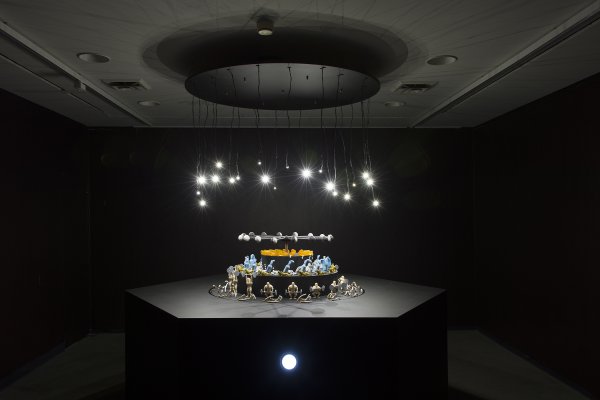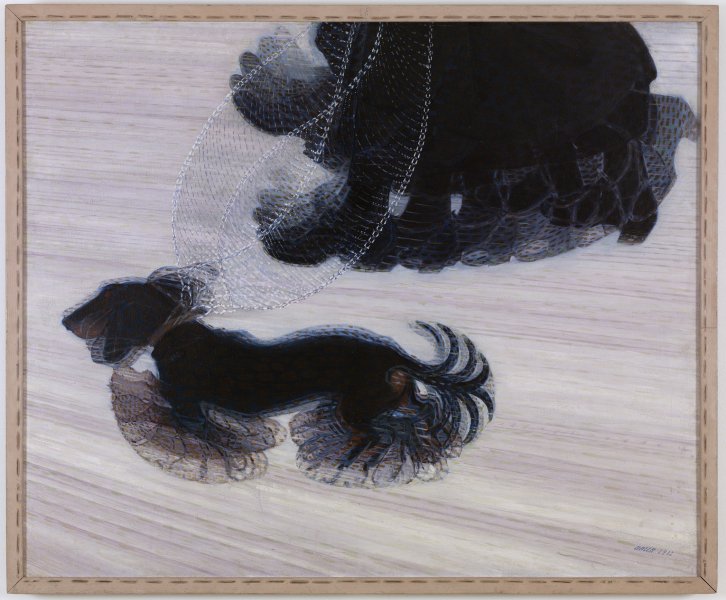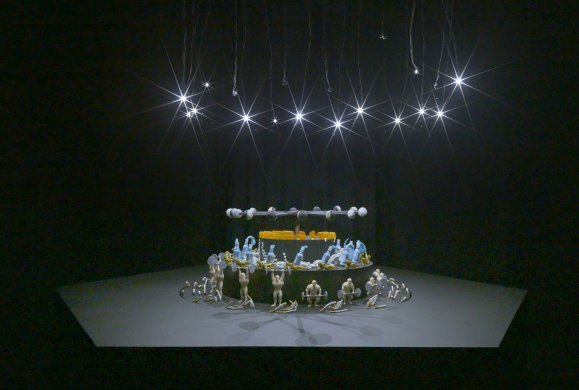The attempt to depict motion in art stretches back to cave painting in the Paleolithic era and continues into the present. Indeed, Giacomo Balla’s Dynamism of a Dog on a Leash, 1912—one of the most beloved works of art in the Albright-Knox’s collection—is one such attempt to represent motion in the modern city.
Camille Henrot created the illusion of motion in her kinetic sculpture, October 2015 Horoscope, using a zoetrope, a pre-film technology for animating images initially developed between the 1830s and 1860s. The zoetrope works almost like a flipbook. A simple action is broken down into a series of still images, each of which is slightly different from the images preceding and following it in the series. These images are then arranged on a spinning drum or table. When a carefully timed series of interruptions is introduced—by a strobe light activated by the viewer in the case of October 2015 Horoscope—the human brain interprets what would otherwise be a blur as continuous motion.
The images in October 2015 Horoscope depict a carnival of vice. The work invokes our reliance on drugs, cigarettes, and alcohol, but it also suggests how apparent virtues, like bodybuilding and exercise, can become addictions. This “horoscope” includes cartoonish sculptures of phases of the moon, which allude to the passage of time but also cycles of addiction. Henrot’s use of an outmoded technology to represent contemporary vice brings an element of the funhouse to her subject, a strangely successful effect for a topic that would be difficult to discuss using more traditional narratives.
Camille Henrot's October 2015 Horoscope is on view in the Gallery for New Media through July 9.


